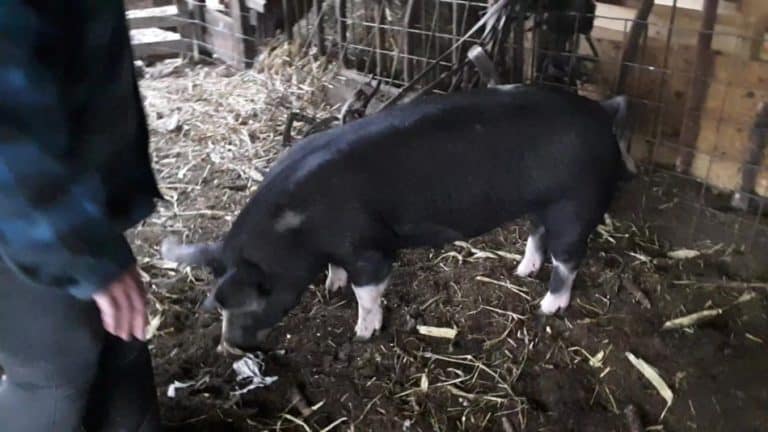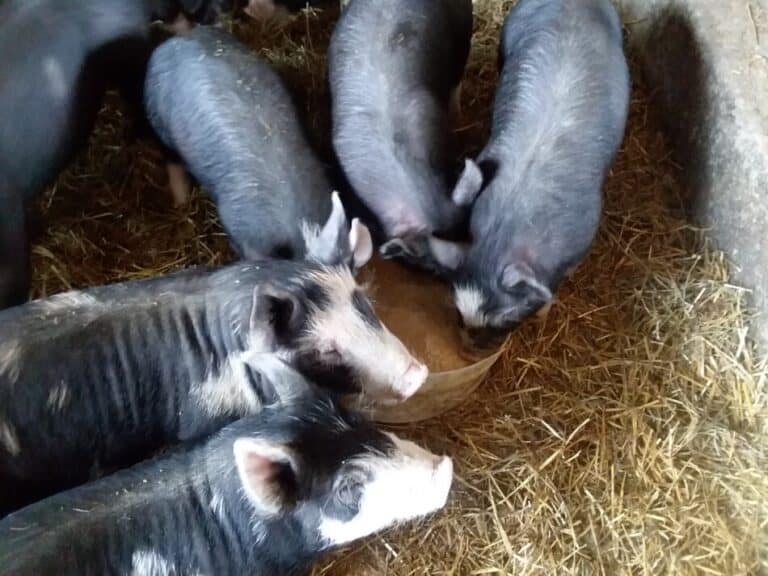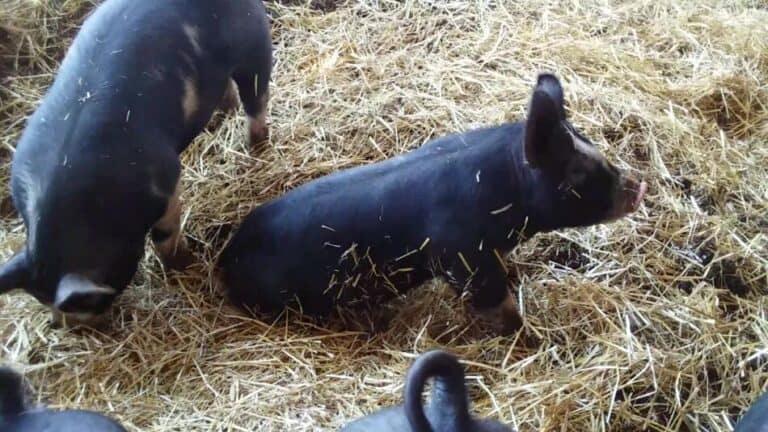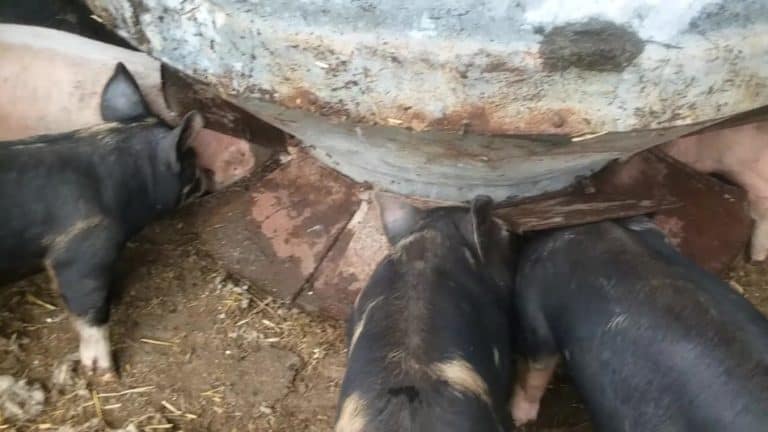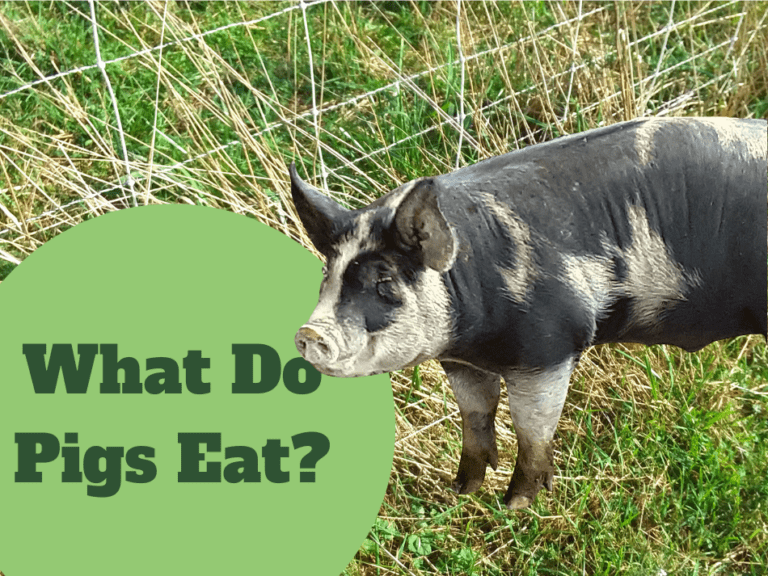How Much Do Piglets Cost? (Including buying tips)
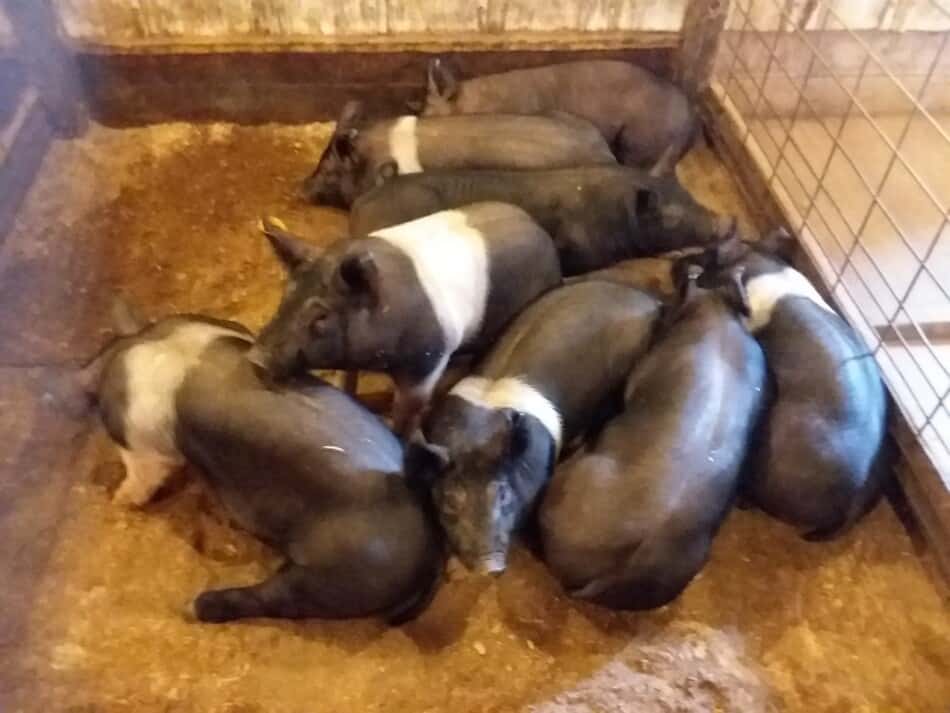
As you look around for some feeder pigs to raise, you’ll notice there are a lot of differences in price. What is the common price to pay for a feeder pig?
Feeder pigs cost between $50-200 each. Feeder pigs cost less in the fall through the winter and in areas that have a large supply of piglets available. Feeder pigs cost more in the spring through early summer and in areas that have very few feeder pigs or if the pigs are a rare or unusual breed.
We all want small farmers to stay in business and keep raising pigs, but the bargain shopper in all of us wants a good deal, at the same time.
There are some things you can do to get your best feeder pigs for your money. Before I decided to keep some breeding stock of my own, I bought feeder pigs for the freezer, so I’ve been on both sides of raising feeder pigs.
Is Raising Your Own Pigs For Meat Worth It? will walk you through all the things you need to consider, including feed costs, for raising your feeder pigs.
Piglets cost between $50-200 each
The low price for feeder pigs is $50 each. In high demand times, like the spring, feeder pig prices will be closer to $100-150 each. Rare breed piglets will cost more.
In the off season, late summer through late winter, feeder pigs will be closer to the $50 mark, at least around here (Ohio).
In the higher priced season, spring through early summer, $100+ per feeder is more of the norm.
To be clear, we are talking about pigs at the Kidron Auction, which are mostly crossbred piglets from local small farmers.
These are not big, commercial outfits, those pigs do not sell through the local auction. Confinement operations (CAFO’s) have their own closed supply chain.
I recently got a comment on one of my videos that said in his area piglets were $300 each! I suggested widening out his search and considering starting at a different time of year.
If you are looking for something specific or special, it will cost you more. These are pigs to be raised for meat, with, generally, mixed ancestry that will produce a nice, meaty freezer pig for you in a few months.
I was just at the auction last week and feeder pigs the size of mine (I have two litters) are bringing $120 each! Wow, that’s quite a bit for a little porker.
This is good news for me selling, but maybe a bit on the high side for you.
I recently had a viewer comment that feeder pigs in his area were $350 each. I’d guess they were show prospects, but it really doesn’t matter-the price is the price.
So, what are his options? I suggested that he expand his search a bit and consider driving a little further to get the pigs or choosing a different time of year to buy them.
In my area time of year is a huge determinant of pricing, generally in the neighborhood of double the price per head.
With this in mind and if you are seeing similarly high prices per head, could you possibly start your pigs at a different time and get the off season price?
Read market reports for feeder pig prices for your area
To find the local prices for your area, or as close to local as it gets, look up the market report (link to Kidron Auction Market Report) for the nearest livestock auction to you.
Start poking around and see what price feeder pigs are bringing in your area. This will give you a basic idea of what to expect to pay for your feeder pigs.
No auctions even close to you? See what you can come up with online, start with Craigslist.
Sadly, in some parts of the country feeder pigs are very hard to find, if that’s the case in your area be prepared to pay a higher price.
If you are looking for feeder pigs, so are other folks. Have you considered breeding pigs?
Wide, meaty feeder pigs will cost more than thin feeder pigs
Some of the piglet cost is related to structure. I have noticed the more thickly built piglets sell better than the more leanly built piglets.
Wide piglets are more meaty and that’s what folks are willing to pay a bit extra to get.
By paying extra for the widely built piglets I mean the difference between my fall piglets and some of the other piglets that sold the same day but were more thinly built was $30.
Mine are widely built, meat cross piglets that sold for $62.50 each, compared to the thinly built piglets brought $35 each. Both sets of piglets were healthy, mine are carrying more muscle.
Structure determines the end result and the selling price. Get a wide, meaty piglet to raise a wide and meaty finished pig, you’ll get more meat for your efforts.
To be clear, I’m also not talking about unhealthy piglets. Those should be avoided at all costs!
I’m talking about piglets that are naturally built to grow into a thinner market hog. You’ll get more meat from a widely built feeder pig.
Best Pig To Raise For Beginners gives you tips on how to pick out pigs that will be healthy and grow well for you.
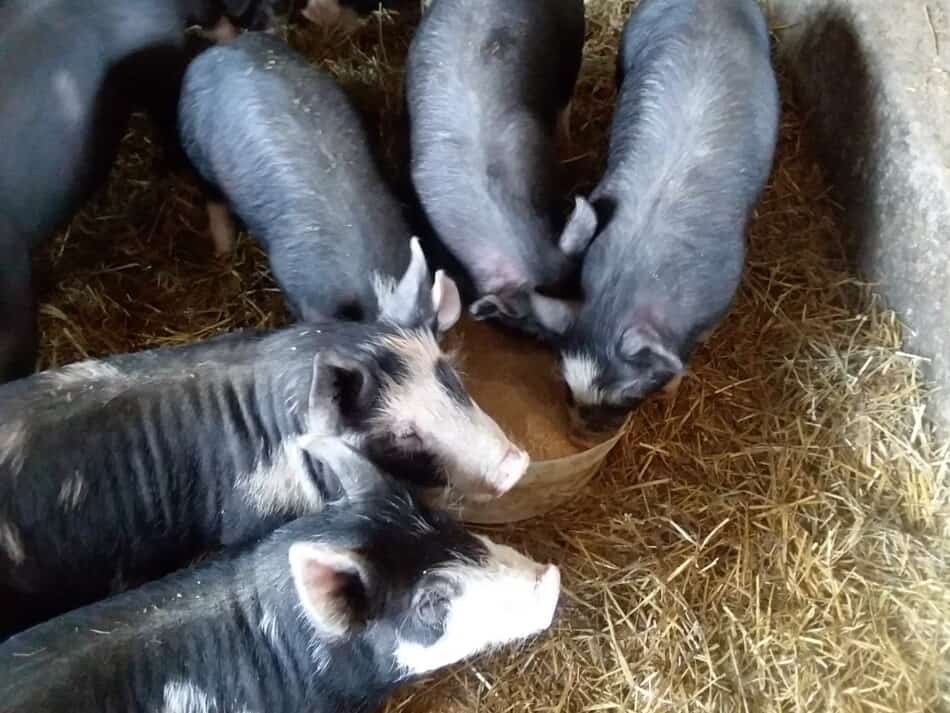
Piglets will cost more in the spring
Feeder pigs will cost more to purchase in the spring and early summer than they would in the other times of the year.
Even though piglets are born year round and you can raise a pig for meat anytime of the year, spring is the most popular, so price goes up.
Sometimes price goes up quite a bit, more than double. This is partly from the kids wanting pigs for the fair, but also for folks wanting to raise pigs at home in the nicer weather, rather than in the cold.
We are fortunate to have a feeder pig auction every week in Kidron. Feeders will also sell at the other local auctions, but Kidron is the most popular for feeder pig sellers and buyers.
Why am I telling you this? So you can be assured that we see this price increase every year. It’s not a one off, lots of buyers and hardly any feeder pigs that day kind of thing.
Feeder pig prices are much higher in the spring, always.
Consider buying feeder pigs later in the year (not spring)
If you have some wiggle room in your pig raising schedule, consider getting your piglets later in the year.
If you buy 50-60 pound feeders, you only need 4 months or so to finish them. This means piglets that you buy in July would be finished (butcher ready) by November.
I know that in some areas of the country, it’s hard to find piglets, so you get what you get as far as when the piglets are available for purchase. Look around anyway, especially online, you might be surprised.
Keep in mind that most folks raising pigs breed sows for two litters per year, approximately 6 months apart. Most people breeding pigs would also have more than one sow, meaning they have more piglets coming.
If you missed out on the piglets that were sold in April, you can ask about piglets from the next litter that would be available in October or from another sow.
If you have mild winters, these fall piglets would be the ticket!
The plus side of raising feeder pigs in the colder weather is that they grow better. It’s easier to keep pigs warm than to try to keep them cool in the summer, even if they have plenty of shade!
The down side of pigs in the winter is freezing water, my arch nemesis. In the winter, adding more bedding is easy, keeping the water drinkable, that’s more of a challenge.
Rare or unusual breed piglets will be expensive
When purchasing feeder pigs of rare or unusual breeds, expect them to be more expensive than a piglets of a more commonly available feeder pig breed.
This makes sense, rare means not many of these type of pigs around so the demand exceeds the supply, which keeps prices higher.
Please think carefully before you get an unusual breed of pig for your feeder pigs.
Unless you are doing something very specific with your pigs and have pig raising experience, all you are doing is getting expensive, slower growing pigs.
Don’t get me wrong, I love the idea of rare and unusual breeds of pigs, but there is no getting around the fact that they are rare for a reason, which is usually poor performance, meaning slow growth.
Get feeder pigs from a local, hands on pig farmer
If, for instance, you have a neighbor that raises Red Wattle pigs and you can get a few, as long as you like what you see of her pigs, go for it! This is perfect.
Pigs born and raised close to you by a hands on farmer is exactly what you want.
If, on the other hand, you had to drive halfway across the state to get these special feeder pigs and pay a huge premium because of their genetics, I’d rethink the plan.
Get some nice crossbred feeder pigs from a local.
Tips on what to look for in a feeder pig
Here are the tips of what you are looking for in a feeder pig:
- Healthy and spunky, this is a must have!
- Widely built, look for a wide chest
- Weighing 50-60 pounds when you buy
- Castrated and dewormed before you bring them home
These tips apply regardless of breed. Healthy piglets are mandatory, never compromise on this.
In some areas of the country, feeder pigs are sold at a lighter weight, more like 35 pounds. That’s okay if this is the way it’s done in your area.
If you have the choice, bigger is better. Bigger feeder pigs will transition better to your management and more easily handle the stress of moving.
Any castration or deworming should be done before you move the pigs.
Do not bring home uncut boars! They grow really fast and will be too big to handle before you know it! Have the breeder do these things for you.
